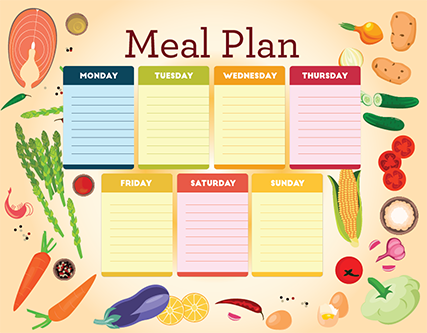A Beginner’s Guide to Creating a Diabetes-Friendly Meal Plan
Living with diabetes can be challenging, but with the right meal plan, it’s possible to maintain stable blood sugar levels and lead a healthy life. Whether you’ve just been diagnosed with diabetes or you’re looking to improve your current eating habits, this blog post will provide you with a beginner’s guide to a diabetes meal plan. By making informed food choices and incorporating balanced meals into your daily routine, you can take control of your health and minimize the impact of diabetes on your life.
Understanding Diabetes
Before we dive into the meal plan, it’s important to have a basic understanding of diabetes. Diabetes is a chronic condition in which the body either doesn’t produce enough insulin (Type 1 diabetes) or doesn’t effectively use insulin (Type 2 diabetes). Insulin is a hormone that helps regulate blood sugar levels. When blood sugar levels are too high, it can lead to various health complications over time.
Key Principles of a Diabetes Meal Plan
- Portion Control: Consistently managing portion sizes is crucial for individuals with diabetes. Balancing your carbohydrate, protein, and fat intake helps control blood sugar levels. It’s important to work with a registered dietitian or healthcare professional to determine the right portion sizes for your specific needs.
- Carbohydrate Counting: Carbohydrates have the most significant impact on blood sugar levels. Learn to count carbohydrates and distribute them evenly throughout the day. Complex carbohydrates, such as whole grains, vegetables, and legumes, are generally better choices than refined carbohydrates like white bread or sugary snacks.
- Choose Low Glycemic Index Foods: The glycemic index (GI) ranks foods based on how quickly they raise blood sugar levels. Foods with a low GI are digested and absorbed more slowly, resulting in a gradual rise in blood sugar. Focus on consuming foods with a low GI, such as whole grains, non-starchy vegetables, and lean proteins.
- Include Lean Proteins: Proteins are essential for overall health and help stabilize blood sugar levels. Incorporate lean protein sources like fish, poultry, tofu, eggs, and legumes into your meals. Avoid processed meats and opt for healthier cooking methods like grilling, baking, or steaming.
- Healthy Fats: Include healthy fats in your diet, such as avocados, nuts, seeds, and olive oil. These fats provide essential nutrients and promote heart health. However, it’s important to consume them in moderation due to their high calorie content.
Unlocking the Power of Vitamins: Natural Ways to Lower Blood Sugar Levels
Sample Diabetes Meal Plan
Here’s a sample diabetes meal plan to get you started:
Breakfast
- Spinach omelet made with egg whites and topped with diced tomatoes.
- Whole grain toast with a thin spread of almond butter.
- A small serving of mixed berries.
Snack
- A handful of raw almonds or walnuts.
- A piece of fruit, such as an apple or a small orange.
Lunch
- Grilled chicken breast with a side of steamed broccoli and quinoa.
- Mixed green salad with cucumber, cherry tomatoes, and a vinaigrette dressing (avoid high-sugar dressings).
Snack
- Greek yogurt with a sprinkle of chia seeds.
- Carrot sticks with hummus.
Dinner
- Baked salmon seasoned with herbs and served with roasted Brussels sprouts and brown rice.
- A side salad with dark leafy greens and a light dressing.
Snack (if needed)
- Sugar-free Greek yogurt with a handful of berries.
- A small handful of unsalted nuts.
Remember, this is just a sample meal plan, and individual needs may vary. It’s essential to consult with a healthcare professional or registered dietitian to personalize your diabetes meal plan.
Managing diabetes through a well-balanced meal plan is crucial for maintaining stable blood sugar levels and overall health. By following the key principles of portion control, carbohydrate counting, and incorporating lean proteins, healthy fats, and low GI foods, you can take control of your diabetes management. Remember, consistency and moderation are key, and seeking guidance from healthcare professionals will help you design a personalized meal plan that suits your needs. With dedication and proper nutrition, you can lead a fulfilling and healthy life while managing your diabetes effectively.











